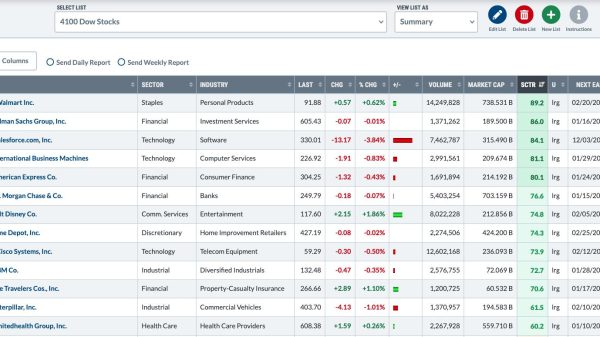In the bustling business world, efficiency is a priority. Every second counts, and streamlining operations can save valuable time and resources.
One effective strategy is automating workflow management. It’s a transformative shift in how companies conduct their daily operations.
Understanding Automation In Workflow Management
Automating workflow management leverages smart systems, including workflow automation software, to simplify and optimize business operations. Acting as an efficient, error-proof digital assistant, this software oversees all tasks, from everyday administrative duties like data entry and scheduling to more complex processes such as managing project timelines and resource allocation.
The strength of automation lies in its adaptability, capable of adjusting to different business models and operational demands. It bridges departmental gaps and promotes a seamless flow of information and tasks, providing a holistic approach to workflow management. This makes it an indispensable asset in our fast-paced business world.
Benefits Of Workflow Management Automation
As businesses pivot towards digital transformation, workflow management automation is taking centre stage. This powerful tool offers numerous benefits, from boosting efficiency to improving accountability.
Here are the key advantages of embracing automation in your workflow management:
Increased Efficiency: Automation reduces the time spent on routine tasks. The result? Employees can focus on what truly matters—core business functions. Plus, automation works 24/7, keeping your business running even after hours.
Improved Accuracy: Humans make errors; it’s inevitable. But a well-designed automation system eliminates the chances of human error, ensuring tasks are completed accurately every time.
Enhanced Accountability: Workflow automation provides clear task visibility. Who’s doing what, and when? With automated workflows, you’re never left guessing.
Real-Time Updates: Automation systems provide real-time updates, allowing quicker decision-making and immediate action on pending tasks.
With these benefits, it’s easy to see why many organizations implement workflow management automation.
Best Practices In Workflow Management Automation
While there are numerous benefits, the journey towards automation is not without its challenges. Successful implementation hinges on adherence to best practices. Let’s explore the best practices for implementing automated workflows!
Choosing The Right Automation Tools
Selecting the most suitable automation tools is pivotal to successful workflow management automation. The right tool can turbocharge your productivity, while a mismatch could lead to inefficiencies. Here are some crucial factors to consider:
Understand Your Needs: Identify the areas that need automation. Choosing a tool that aligns with your unique business needs and workflows is essential.
Evaluate User-Friendliness: Look for tools that are easy to use. A steep learning curve might delay implementation and disrupt your workflow.
Check Compatibility: The chosen tool should be compatible with your existing systems to facilitate seamless integration.
Consider Scalability: As your business grows, your automation needs may evolve. Opt for a tool that can scale up and adapt to your changing needs.
Think About The Budget: Consider the cost of the tool and the return on investment. Ensure the benefits outweigh the costs.
By keeping these tips in mind, you’ll be better equipped to choose the right automation tools to optimize your business operations.
Planning For Change
Transitioning to automated workflows can be a significant shift, and careful planning is crucial for facilitating this process. A well-thought-out plan facilitates smoother integration and prepares the team for the change. Here are some actionable steps to take:
Identify Areas For Automation: Determine which tasks or processes would benefit most from automation. Prioritize based on time consumption, error-proneness, and task importance.
Set Clear Goals: Define what success looks like. Having clear goals allows you to measure the effectiveness of the automation.
Develop A Timeline: A timeline helps manage expectations and ensures all stakeholders are on the same page.
Establish A Backup Plan: Automation can sometimes falter, so having a backup plan is essential to avoid any disruption in your operations.
By focusing on these aspects, you’ll be well on your way to developing an effective plan for change, setting a firm foundation for the successful implementation of automated workflows.
Involving Everyone
The shift towards automated workflows isn’t just a technical change; it’s a cultural shift too. Engaging all stakeholders in the process is vital for a successful transition. Here’s how you can involve everyone effectively:
Clear Communication: Share the reasons for the switch to automation and the expected benefits. This openness promotes understanding and buy-in from the team.
Training: Provide comprehensive training sessions on how to use the new system. This ensures everyone is comfortable and competent with the change.
Address Concerns: Create avenues for feedback and concerns. This approach promotes a feeling of inclusion and can uncover potential issues.
Recognize Effort: Celebrate the milestones achieved during the transition. Recognition boosts morale and encourages engagement.
Ensuring everyone is on board with the change will create an environment conducive to successfully integrating automated workflow management.
Testing Before Implementation
Before rolling out automated workflows across your organization, it’s wise to put them through a testing phase. This precautionary measure can help catch potential issues before they disrupt your operations. Here are some useful strategies for effective testing:
Start Small: Begin by testing on a small scale. It’s easier to spot and rectify issues when they affect a limited number of processes.
Get User Feedback: Involve end users in the testing phase. Their feedback can provide invaluable insights into the system’s usability and functionality.
Use Realistic Data: Test using realistic data to get a clear picture of how the system will perform in real-world scenarios.
Document Results: Keep a detailed record of the testing outcomes. This documentation can help identify recurring problems and monitor progress.
By conducting thorough testing before full-scale implementation, you’ll ensure the transition to automated workflows is as seamless and efficient as possible.
Conclusion
Automating workflow management is a strategic move, driving your business forward. As discussed, the benefits range from increased efficiency and accuracy to improved accountability. Implementing it correctly, however, requires careful planning, choosing the right tools, and fostering an environment of acceptance. The future of work is here, with automation being a crucial part of it. Harness its power and watch your business thrive!
Read more:
Automating Workflow Management: Key Benefits And Best Practices
























